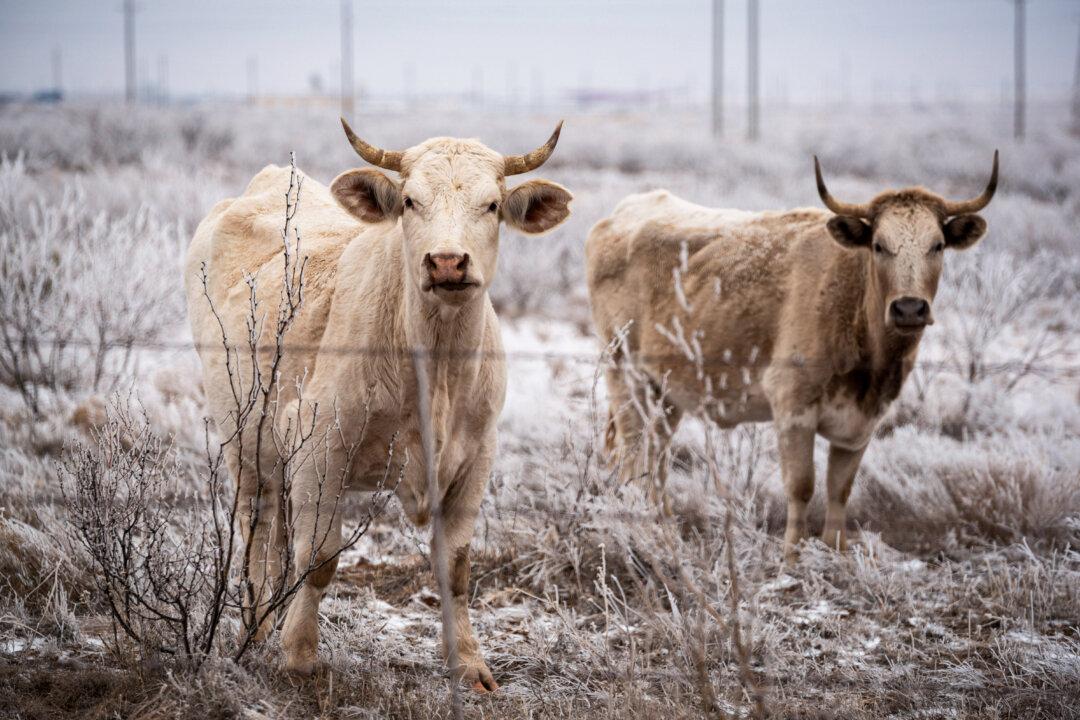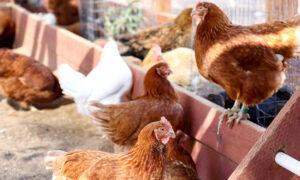Avian influenza has been detected in a person in the United States, officials said on April 1.
The person became ill after coming into contact with cows that are likely sick with the influenza, also known as the bird flu, the Texas Department of State Health Services said.
The Centers for Disease Control and Prevention (CDC) said that its testing confirmed that the person has highly pathogenic avian influenza A(H5N1).
The first human case domestically was confirmed in Colorado in 2022. That man recovered after experiencing fatigue.
Worldwide, hundreds of cases, as well as hundreds of deaths, have been recorded since 2003, according to the World Health Organization.
“This infection does not change the H5N1 bird flu human health risk assessment for the U.S. general public, which CDC considers to be low,” the CDC said in a statement. “However, people with close or prolonged, unprotected exposures to infected birds or other animals (including livestock), or to environments contaminated by infected birds or other animals, are at greater risk of infection.”
According to officials, the new patient’s main symptom was conjunctivitis, or pink eye.
The CDC said over the weekend that people who are exposed to confirmed or probable avian influenza cases should monitor themselves daily for 10 days and report any new respiratory symptoms or heightened temperatures. The incubation period is generally three to five days, but can be as long as 10 days, according to the agency.
The human case comes after cows in five states, including Texas, tested positive for the influenza.
Tests came back positive from New Mexico, Idaho, and Michigan, the Department of Agriculture said on March 29. Cows in Texas and Kansas previously tested positive for the illness, officials announced on March 25.
The cows in Idaho and Michigan came from Texas. The cattle did not appear sick when they were picked up from Texas and moved to Michigan, according to the Michigan Department of Agriculture and Rural Development.
Federal and state officials have been investigating the cases, which have been found among mostly older cows exhibiting symptoms such as decreased milk production and a diminished appetite. The CDC and the Food and Drug Administration are assisting.
Because the affected cows in Idaho came from another state that has identified influenza cases in cattle, the cases in Idaho may have been transmitted by cows, the Idaho State Department of Agriculture said.
The flu has been detected in birds before, and dead wild birds were found at the farms that reported the initial cases, the Department of Agriculture said. As of now, birds “are believed to be the source” of the infections, the agency said. But the spread of the illness among Michigan cattle, it said, indicates that transmission between cattle “cannot be ruled out.”
Farmers are being encouraged to quickly report illnesses among their cattle to veterinarians, particularly if cattle experience symptoms associated with the influenza.
Officials Say Milk Still Safe
The growing number of cases are not putting people at risk because milk bought commercially is pasteurized, officials said.“Dairies are required to send only milk from healthy animals into processing for human consumption; milk from impacted animals is being diverted or destroyed so that it does not enter the human food supply,” the Department of Agriculture stated.
“In addition, pasteurization has continually proven to inactivate bacteria and viruses, like influenza, in milk. Pasteurization is required for any milk entering interstate commerce for human consumption.”
The Food and Drug Administration said the cases are a reminder that it can be harmful to ingest raw milk, which is favored by some people who believe that there are health benefits to drinking unpasteurized milk.
“This outbreak has quickly grabbed the attention of the agriculture industry on a national level. Understanding the details surrounding the transfer of avian virus to livestock is the top priority of animal health professionals and agriculture agencies,” Texas Agriculture Commissioner Sid Miller said in a statement.
“While troubling, this outbreak is not currently expected to threaten our nation’s commercial dairy supply.”
The bird flu is affecting about 10 percent of each affected herd, and there has been “little to no associated mortality” so far, according to federal officials.
“Milk loss resulting from symptomatic cattle to date is too limited to have a major impact on supply, and there should be no impact on the price of milk or other dairy products,” the Department of Agriculture stated.
“Further, the U.S. typically has a more than sufficient milk supply in the spring months due to seasonally higher production.”







